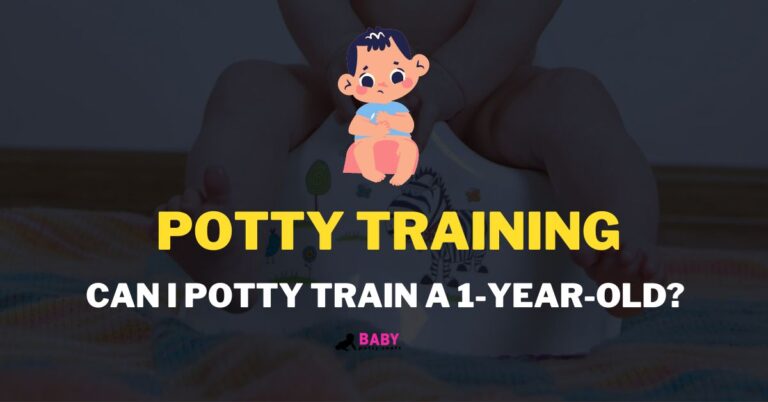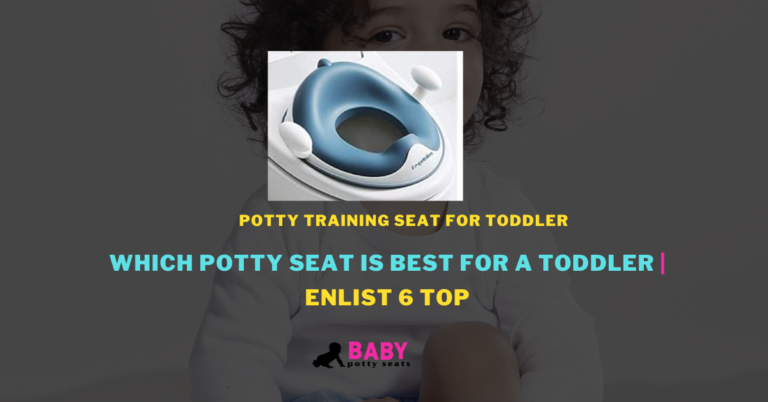Getting your little boy potty trained is a significant developmental milestone. So choosing the right and easiest and best potty training method for him can make it a joyful journey.
Usually, boys and girls show signs of readiness or are ready for potty training between the ages of 18 to 30 months. But you might have heard that boys can take a little longer to hang things. Potty training might be a headache journey for both parents and toddlers, but with the right approach or strategy, it becomes joyful.
This extensive guide will provide the best potty training techniques designed especially for boys. Everything you need to know to confidently navigate this exciting stage, from setting up consistent routines to creating a supportive environment.
Easy 12 Steps in the Best Potty Training Method for Boys
1. Let him watch and learn
‘Mostly,’ a toddler learns by copying and watching you use the bathroom. This is a natural step that toddlers own learn in their earlier potty training journey. Your little one observes that your daddy uses the toilet differently from your mommy does. That creates an opportunity for parents to explain the primary mechanism of how boys use the bathroom.
2. Establishing a Supportive Environment
Potty training requires a supportive environment, which must be established. Potty training aids that are entertaining and engaging can be used to decorate the bathroom, as boys tend to respond well to visual cues and encouragement. Your boy can be drawn in, and the process made more fun with potty training books, colorful posters, and wall decals.
3. Introducing the Potty
One of the most essential steps in training your little boy is introducing him to the potty. Start by selecting a comfortable and age-appropriate potty chair or seat.
If your child is 12 months to 2 years old, then a potty chair will be the best option. It easily fits with your little one’s height, and he quickly learn and uses it independently.
Besides these, if you have no space to make proper space for a potty chair or your baby with a good height or turns into a toddler, then use a potty seat or toilet seat reducer.
Let your son investigate and learn about the potty seats. To help him develop a routine, encourage him to use the potty regularly, like after meals or before bed.
4. Teach him to sit first, then stand
It makes sense to have your son sit on the potty to poop and pee first, as bowel movements and urine frequently occur at the same time. He will discover that both go in the potty in this way.
Additionally, when you need him to focus on learning the fundamentals first, he won’t be tracked by the excitement of spraying and learning how to aim. Don’t let him to spend too much time on the toilet (15 minutes is plenty) or allow him to become distracted by other things.
Your son can try standing up once he is at ease using the bathroom while seated. (Although he is free to urinate while seated for as long, there’s no hurry.) For target practice, consider placing a few pieces of O-shaped cereal in the potty if he appears hesitant. As your son steadies his aim, be prepared to clean up a few messes.
5. Encouraging Independence
Potty training success depends on promoting independence. Give your boy the gentle direction and encouragement he needs to learn how to undress and use the potty independently. To help him feel more confident, recognize and celebrate each accomplishment and show him lots of love and support.
6. Set up Potty Training Schedule
Depending on your daily routine and whether your son attends daycare or preschool, you can decide when to take your toddler out of his diapers. If so, you should coordinate your approach with his teacher or provider.
You’ll choose whether to switch to underwear permanently or to alternate between diapers and potty training underpants. Although disposable training pants are convenient, they’re recommended by many experts and parents to switch straight to underwear or cotton training pants so that your son can immediately feel wet. (Of course, that implies you’ll have to clean up some spills.)
Think about what’s good for both you and your son when you make your choice. His physician might advise using one approach over another. Continue wearing disposable pants or diapers at night and while you’re about for a while. You can discuss this with your preschool teacher or daycare provider to make sure you both understand when it’s appropriate for your child to start wearing underwear to school.
7. Implementing Consistent Routines
When it comes to toilet training, consistency is essential. Your boy can better understand what is expected of him and when by creating consistent routines. Assign designated periods during the day for bathroom breaks, and make sure to adhere to the plan as precisely as you can.
8. Using Positive Reinforcement
One very effective method for potty training is positive reinforcement. Congratulate your son on each successful toilet trip, and use loving and supportive words to support his efforts. To celebrate his accomplishments and sustain his motivation, think about putting in place a reward system that includes stickers or small treats.
However, try not to make a big deal out of every potty trip; otherwise, your child might become anxious and self-conscious from the attention.
9. Handling Accidents with Patience
Accidents are a common occurrence during the potty training process and need to be handled with tolerance and compassion. Reprimanding or punishing your son for mishaps is not a good idea since it can cause stress and disappointment. As an alternative, comfort and assist him in cleaning up and motivate him to try again later.
10. Transitioning to the Toilet
When your boy gains confidence in using the potty, you can start preparing him for the regular toilet. To make the transition easier, get him a sturdy step stool so he can reach the toilet seat. You might also want to think about getting a toilet insert. Throughout this process, be kind and encouraging, providing lots of support as needed.
11. Teaching Hygiene Habits
One of the most important aspects of potty training for boys is teaching them good hygiene habits. When your boy uses the potty, demonstrate how to wipe and wash his hands properly. Sing songs while washing your hands, or use colorful soap dispensers to make the process enjoyable and exciting.
12. Encouraging Nighttime Dryness
It might take longer to dry at night than during the day. Restrict your son’s fluid intake before bedtime and urge him to use the bathroom before bed. To reduce mess during the night, think about using waterproof mattress covers or disposable training pants.
Overcoming Challenges
Since each child is different, some may have difficulties when learning to use the potty. Continue to be calm and patient while providing lots of support and encouragement. Please don’t hesitate to seek advice from a potty training specialist or your pediatrician if you run into problems.
Frequently Asked Questions (FAQs)
Q: When is the best time to start potty training a boy?
A: Because each child is different, some may have difficulties when learning to use the potty. Continue to be calm and patient while providing lots of support and encouragement.
Q: How long does it take to potty train a boy?
A: Every child has a different timetable for potty training, but most boys can finish in a matter of months. The secret to success is patience, consistency, and positive reinforcement.
Q: What if my boy refuses to use the potty?
A: Children frequently object to potty training at first. Remain calm and encouraging, and refrain from placing undue pressure on your boy. Give any attempts to use the potty a lot of praise and encouragement, and if necessary, think about taking a break and trying again later.
Q: Should I wear training pants or underwear during potty training?
A: During the potty training process, training pants can be a helpful tool, particularly for nighttime or outing usage. When your boy consistently exhibits dryness during the day, you can switch to using regular underwear.
Q: How do I handle regression during potty training?
A: Regression is typical during the potty training phase and is frequently brought on by stressors or changes in your boy’s life. Continue to be understanding, encouraging, and reassuring. Go over the fundamentals of potty training again, and give them extra support during this period.
Q: What if my boy is afraid of the toilet?
A: Fear of the toilet is common during potty training, particularly in boys. Proceed cautiously and let your son acclimate to the toilet at his speed. To make using the toilet less scary, consider using a step stool or a potty seat insert.
Conclusion
Getting your boy potty trained is a big developmental step, and it can go more smoothly and successfully if you figure out what works best for him. You can help your boy confidently master this crucial skill by providing a supportive environment, implementing consistent routines, and using positive reinforcement. Remain understanding and encouraging, and acknowledge each small victory as it comes your way.
Related Post: Top 10 Best Potty Seat For Toddler Boy In 2024









One Comment
Comments are closed.